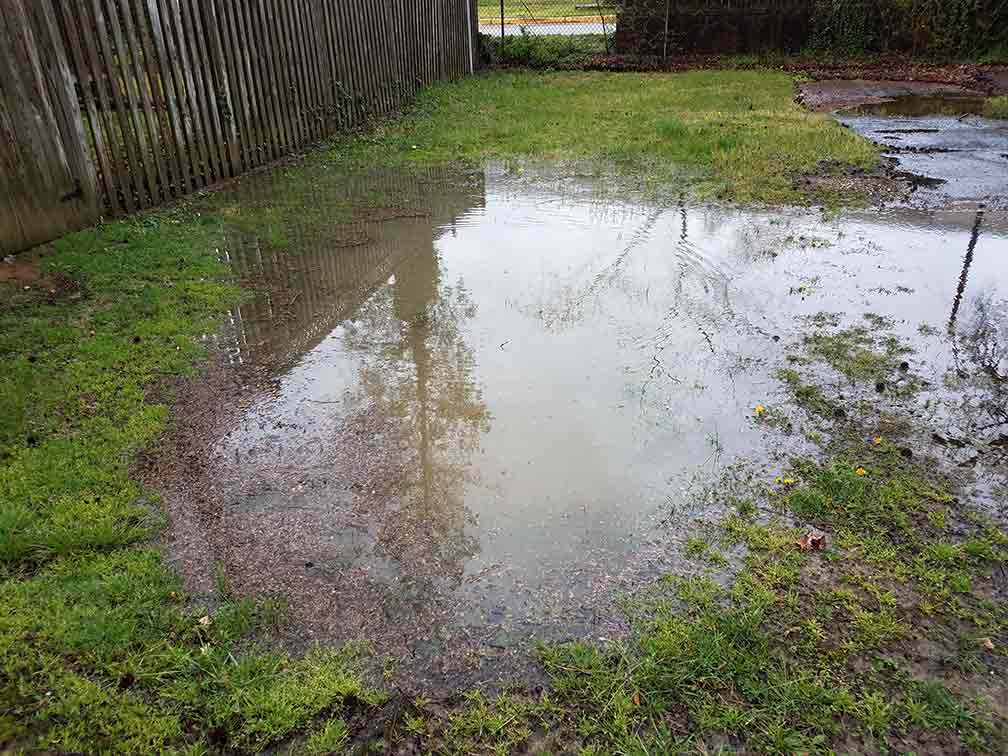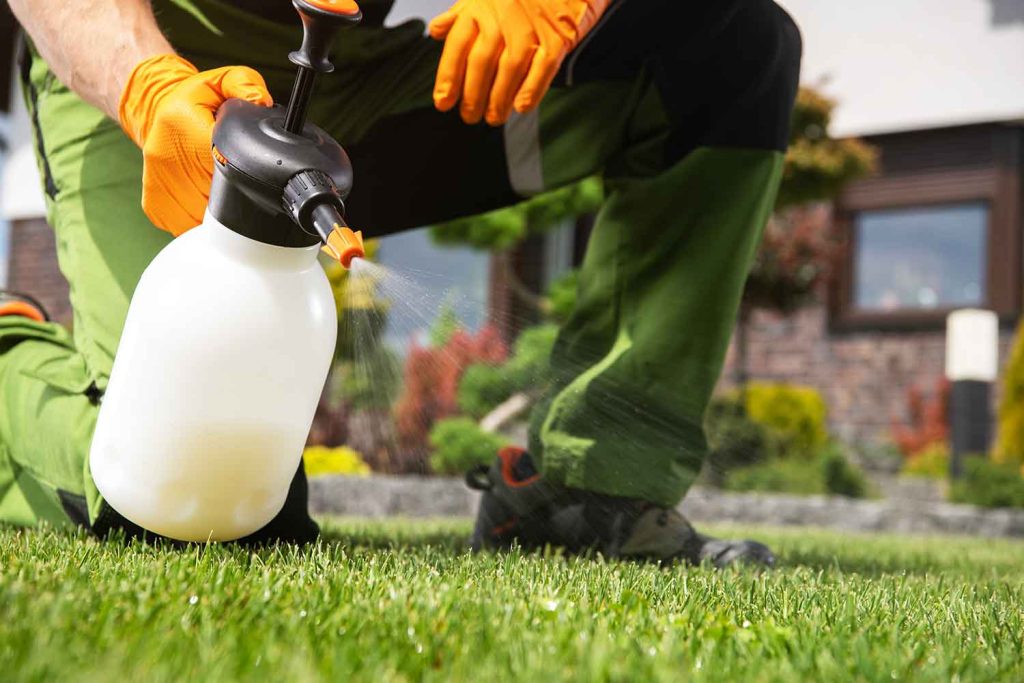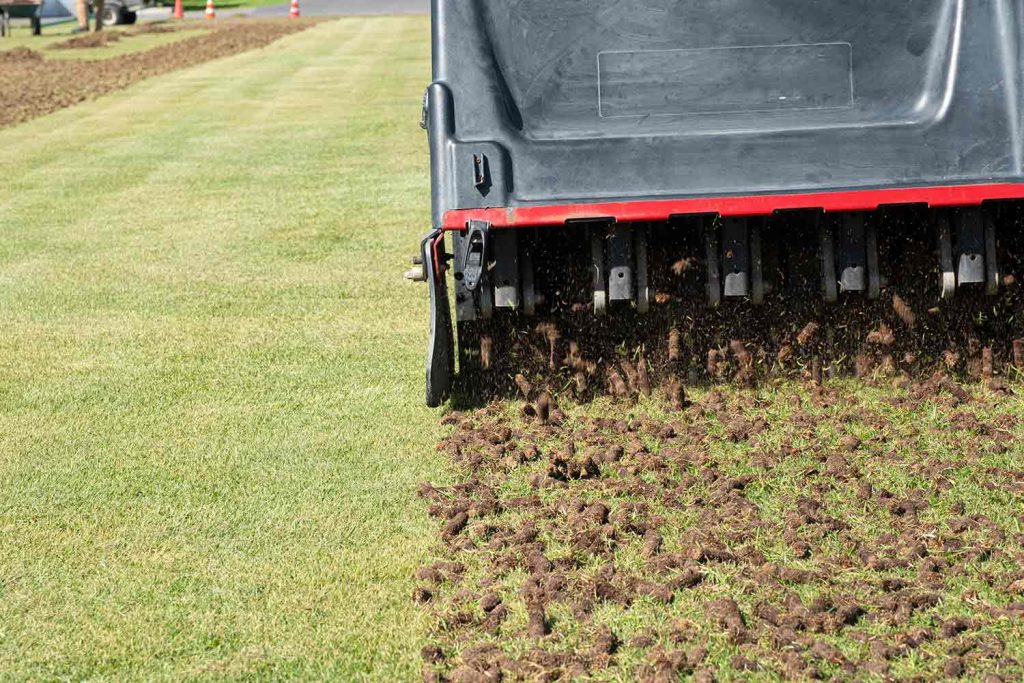
In the simplest terms, aeration is a lawn care task that creates fuller and greener grass by decompressing the soil underneath. Like all living things, your grass needs to breathe, consume nutrients, and absorb water and sunlight. When your lawn’s soil becomes too hard and compacted, these basic necessities get more difficult to receive. Aeration loosens hard soils so that your lawn can have access to everything it needs for healthy growth.
What Causes Compacted Soil?
Soil can become compacted very easily, and the presence of compacted soil in your lawn doesn’t necessarily mean you have neglected your other lawn care duties. In the same way fertilizing and mowing must be performed to maintain healthy turf, aeration is simply another necessary lawn care service. Just like skipping mowings can lead to unruly and unhealthy grass, skipping aeration will cause your lawn to get more and more compacted, even if the rest of your lawn care routine is perfect.

Foot traffic is a large contributor to compacted soils, especially in residential yards. All the mowing and fertilizing in the world can not prevent the eventual compaction caused by excessive traffic. Having large or heavy structures on your lawn, such as inflatable pools, tables, swing sets, etc., will lead to soil compaction if they are not frequently moved/rotated. Unavoidable factors like excessive rain or occasional thatch buildup also contribute to compaction, but a vigilant lawn care routine can minimize these issues.
What Is Thatch?
Thatch is a layer of living and dead organic matter that can be found just above the soil surface. Fallen leaves, dead grass, stems, roots, and more can contribute to a thatch layer, and that layer gets compressed in the same way soil does. Thatch can be raked and broken up throughout the growing season, but even the smallest layer of thatch is harmful on top of compacted soil.

Thatch can be absorbed into healthy, soft lawns for nutritional benefits. However, thatch buildup will only make compaction that much harder to deal with if the soil underneath is too hard to absorb this mixture of organic matter. Together, compacted soil and a thick layer of thatch will block nutrients from reaching down to the roots of your lawn, and your grass will begin to die if aeration is not performed.
What Is The Difference Between Liquid And Core Aeration?
Liquid aeration and core aeration are the two main types of lawn aeration, and their effects are actually quite similar. As one would expect, liquid aeration utilizes a liquid solution that gets sprayed onto your lawn in order to loosen the soil. Core aeration is a mechanical process that involves removing small plugs of soil and thatch so that your lawn can breathe and absorb nutrients more freely.
Liquid Aeration

Ammonium lauryl sulfate is the active ingredient in many liquid aerators, and it is the same ingredient used in hand soaps that breaks apart dirt and grime. Think of liquid aeration as washing your lawn with soap; just like your hands become healthy and soft as dirt dissipates, your lawn is able to breathe and thrive when liquid aerator breaks apart compacted soil and thatch. Liquid aeration actually works much in the same way as core aeration by creating small cracks and pores through which nutrition can be absorbed.
Below are a few more of the benefits you and your lawn can receive from liquid aeration:
- Quick application
- Cost effective treatments
- No plugs left behind
- No heavy machinery
- Deeper penetration into soil
- Covers more ground than core aeration
Core Aeration

Core aeration is the method used by golf courses everywhere to achieve the perfect green landscapes we are all so familiar with, but that same professional service can be performed right in your yard! This method of aeration loosens your lawn by physically pulling out compacted plugs of soil and thatch with an aerator machine. With less compacted soil and more room to decompress, your lawn will become softer and fuller. The holes left behind in the process not only provide a direct route for nutrients, they also give your grass more room to grow and spread roots; the deeper grass roots grow, the healthier your lawn will be! After core aeration, the plugs can be disposed of, or you can allow them to decompose naturally.
The following are additional benefits your lawn will receive from core aeration:
- Breaks apart thatch buildup
- Effective against severe compaction
- Extracted plugs decompose for a natural fertilizer
- Improves drainage issues
- Keeps pests away from standing water
- Improves seed germination and weed control
Tips For Aeration
Whether you are implementing liquid aeration or core aeration, you should always make sure your lawn’s soil is moist before beginning. Compacted soil will be hard enough to penetrate, so ensuring that the top layer of soil is as softened as possible will increase the effectiveness of aeration. Consider waiting for a heavy rainfall, or make sure you water thoroughly the day before aeration occurs.
Lawns that have many bare spots, standing water, or otherwise struggling turf will benefit most from core aeration. Core aeration should be performed on lawns that are severely damaged and/or compacted, and it is often necessary to make two passes over your struggling lawn for the best results.
If your lawn is about 75% healthy and just in need of a little boost, liquid aeration is the way to go. Soil that is not severely compacted will be able to absorb the liquid aerator solution and reap the benefits of aeration without you having to deal with heavy machinery involved with core aeration.
Staying on top of tach buildup throughout the year is the best way to prevent compaction issues from getting even worse. Rather than allowing a thatch layer to build up over time before you address it, keeping it raked and loose regularly will allow your lawn access to nutrition and sunlight all year long, and it will make aeration a much easier and effective process.
Seeding your lawn is important if you want to see green grass grow back, and there is no better time to seed than while you aerate. As compacted soil becomes looser, seeds will be able to fall to an appropriate depth for germination, and the decompression caused by aeration will allow the seedlings to receive the nourishment they require.
Maintaining a healthy lawn is a year-round job, but every step you take in your lawn care routine makes the next step a little easier! Mowing and watering must be performed regularly, and professional fertilization and weed control services will ensure that your lawn is getting the treatment it deserves. Check out our fertilization and weed control page for more information on lawn care in northern Utah!
If you think aeration sounds like just what your lawn needs, the experts at Tuxedo Yard Care would love to help. Aeration can be performed by capable DIY enthusiasts, but a professional aeration service will always ensure the least amount of hassle and the best results for your lawn. Check out our aeration services today, or call us at (801) 540-4713.



